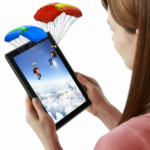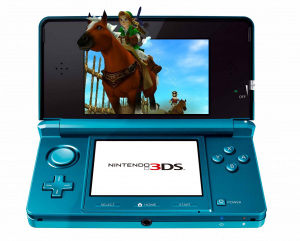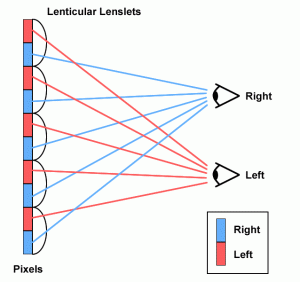Glasses-Free 3D Handhelds – All the Rage or Cause of Rage?
 It started off on giant movie screens using silly glasses with mismatched lenses. Then the screens shrunk, bringing 3D into the living room with 3D-capable HDTVs, but you still had to wear the glasses. Now the screens are even smaller, sitting on things like smartphones, digital cameras, and handheld gaming devices, and best of all, there’s no more need for the silly glasses.
It started off on giant movie screens using silly glasses with mismatched lenses. Then the screens shrunk, bringing 3D into the living room with 3D-capable HDTVs, but you still had to wear the glasses. Now the screens are even smaller, sitting on things like smartphones, digital cameras, and handheld gaming devices, and best of all, there’s no more need for the silly glasses.
It’s called Auto-Stereoscopic 3D, more commonly known as Glasses-free 3D, and it works by using microscopic lenses (known as Lenticular Lenses) on top of the screen to split the image into two parts – one meant to be seen by the right eye, and one for the left. By holding the screen the proper distance from your face, each eye sees its own image, giving the illusion of 3D.
Nintendo had both the good and bad fortune of bringing the first mainstream auto-stereoscopic 3D device to market, the Nintendo 3DS. It was good fortune because everyone loved the idea of a glasses-free 3D experience, but bad fortune because people were expecting a lot more than the technology could deliver.
The Problem with Glasses-Free 3D
As novel as the idea is, auto-stereoscopic 3D has one major flaw: it only works if your head is in exactly the right spot. With handheld devices, this is a major snag. These devices are meant to be portable, moved around, and held every-which-way. While sitting completely still in a nice stable environment (forget trying it in a car or plane), it is possible to see the tasty 3D goodness, but in most cases, it’s just not worth it.
 Nintendo found out the hard way that unless you can hold the device extremely still (something impossible to do while pounding away energetically at buttons playing Ocarina of Time 3D), the results are pretty undesirable. The image is just never crisp enough, kind of like those holographic stickers that you would rotate slightly to see different images – there was always a hint of the other image no matter how you held it.
Nintendo found out the hard way that unless you can hold the device extremely still (something impossible to do while pounding away energetically at buttons playing Ocarina of Time 3D), the results are pretty undesirable. The image is just never crisp enough, kind of like those holographic stickers that you would rotate slightly to see different images – there was always a hint of the other image no matter how you held it.
The portable nature of the devices presented another issue as well. When viewing a 3D image, you expect the point of reference to change as you tilt the device from one side to the other. With stereoscopic 3D, this isn’t the case; the image remains the same, but your mind expects it to change. This causes headaches, dizziness, and even nausea, reports of which plagued Nintendo’s latest handheld.
Persistence Paves the Way
 Manufacturers aren’t giving up on auto-stereoscopic 3D yet, though. Smartphones are the next stepping stone for the technology, and it is getting better. Both HTC and LG have released their 3D smartphones, the EVO 3D and Optimus 3D, respectively. Sporting much higher screen resolutions than the Nintendo 3DS as well as improvements in the lenticular lenses, the 3D result is much better, though still not ideal. Fortunately, the improvements have also made it so that when viewing things in 2D-mode, there is nearly no distortion made by the 3D hardware. Plus much of the appeal is in the fact that these new devices can capture 3D images and video as well.
Manufacturers aren’t giving up on auto-stereoscopic 3D yet, though. Smartphones are the next stepping stone for the technology, and it is getting better. Both HTC and LG have released their 3D smartphones, the EVO 3D and Optimus 3D, respectively. Sporting much higher screen resolutions than the Nintendo 3DS as well as improvements in the lenticular lenses, the 3D result is much better, though still not ideal. Fortunately, the improvements have also made it so that when viewing things in 2D-mode, there is nearly no distortion made by the 3D hardware. Plus much of the appeal is in the fact that these new devices can capture 3D images and video as well.
Conclusion
I always used to say “3D displays just won’t be worth it until they can do it without the need of 3D-glasses.” I guess I’ll have to amend my statement, “3D displays just won’t be worth it until they can do it without 3D-glasses, regardless of the position and orientation of your head.” That should cover all of the bases, I think.


